In a country where there are no public garbage bins, you might think that public toilets would be equally hard to find as a place to dispose of your rubbish. But it is exactly the other way around. Read here to find out more.
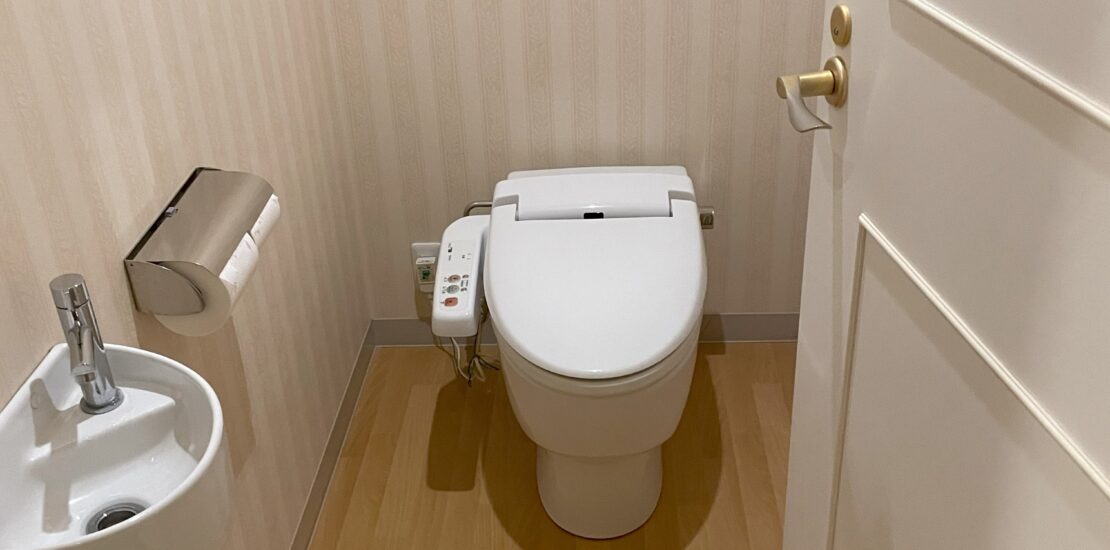
If the need to go to the toilet suddenly strikes, Tokyo is probably the best-served city in the world. Public toilets are everywhere and easily accessible, even if you are in a wheelchair. Or the person who developed the sudden need is sitting in the stroller in front of you.
Inaccessible restaurant toilets
With some exceptions. In restaurants and stores, toilets can be incredibly inaccessible. When a restaurant has taken over an old building (something that is very common), they often keep the toilets — even the old-style squatting Japanese toilet, despite their limited appeal. Most younger Japanese do not know how to use them, and certainly very few foreigners.
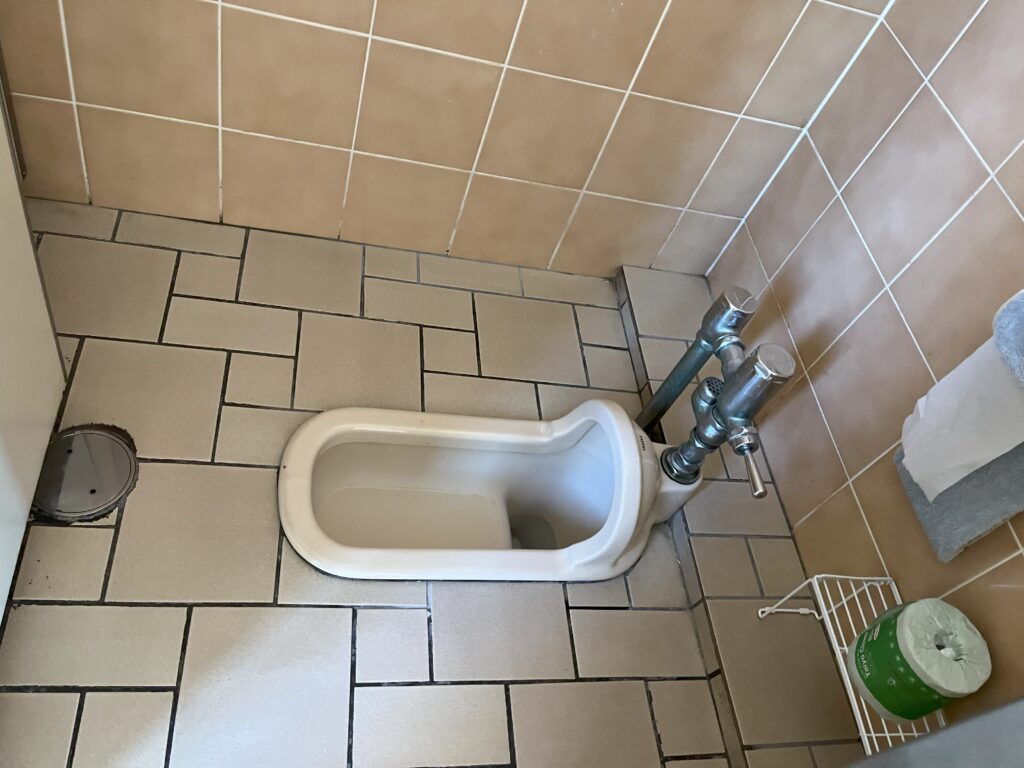
But many restaurants, and almost all stores that are not located in small, old houses, have modern toilets. If you are in one of the many department stores, which still are the main hubs of conspicuous consumption in Tokyo, you can be sure the toilets are clean and well-kept. In the finer department stores, you might even mistake them for restrooms in a posh hotel.
Shared restaurant toilets
But if the restaurant or store is located in one of the many underground shopping centers that dot Tokyo, then the toilets will also be shared. Not that it matters; they will be clean and functional, even if less fancy than in the big department stores.
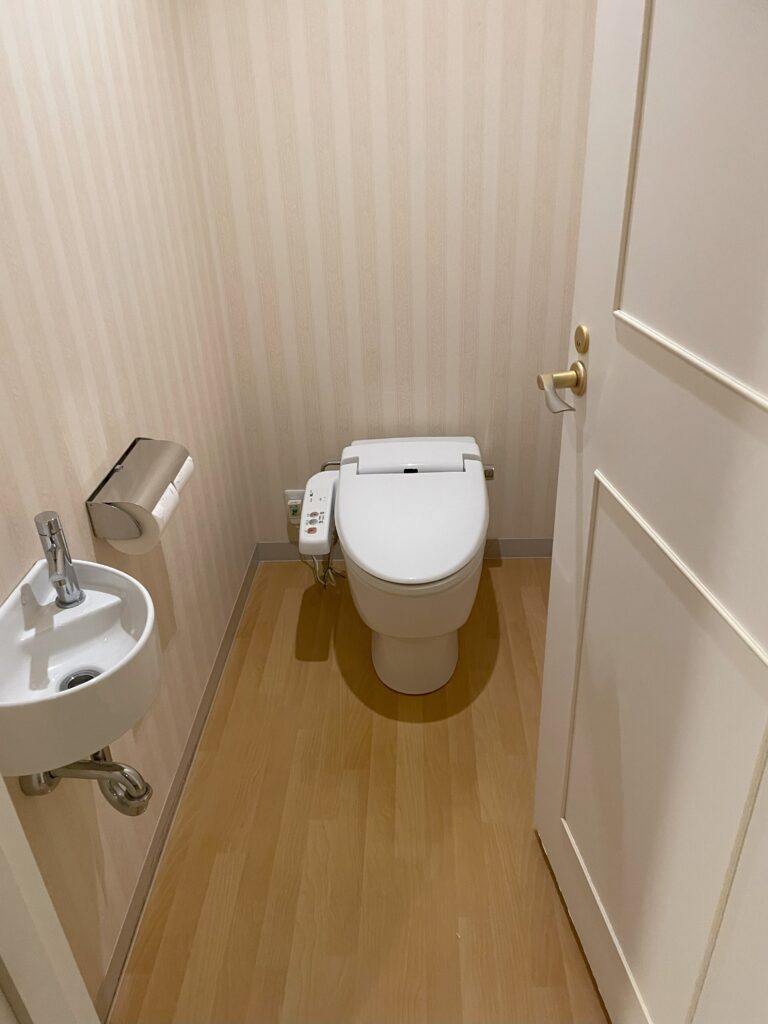
There is one exception to this, however: Toilets in public parks. Often open to the air around them, without heating or fancy appliances, they are as barebones as you can get in Japan. And they tend not to be very clean. Apart from being open to nature and allowing insects, birds, and even bigger animals, they tend to fall into the SEP category — Somebody Else’s Problem.
Family changing toilets
Which means that they can be used for really rough cleaning, without whoever taking care of the mess. And there is never any toilet paper. ”Someone” typically takes it with them, whether someone is homeless or a retiree who is trying to save a few yen. Unless your children urgently have to go, it is better to wait for a few minutes and walk down the street, where you are sure to find a better-maintained and cleaner public comfort station.
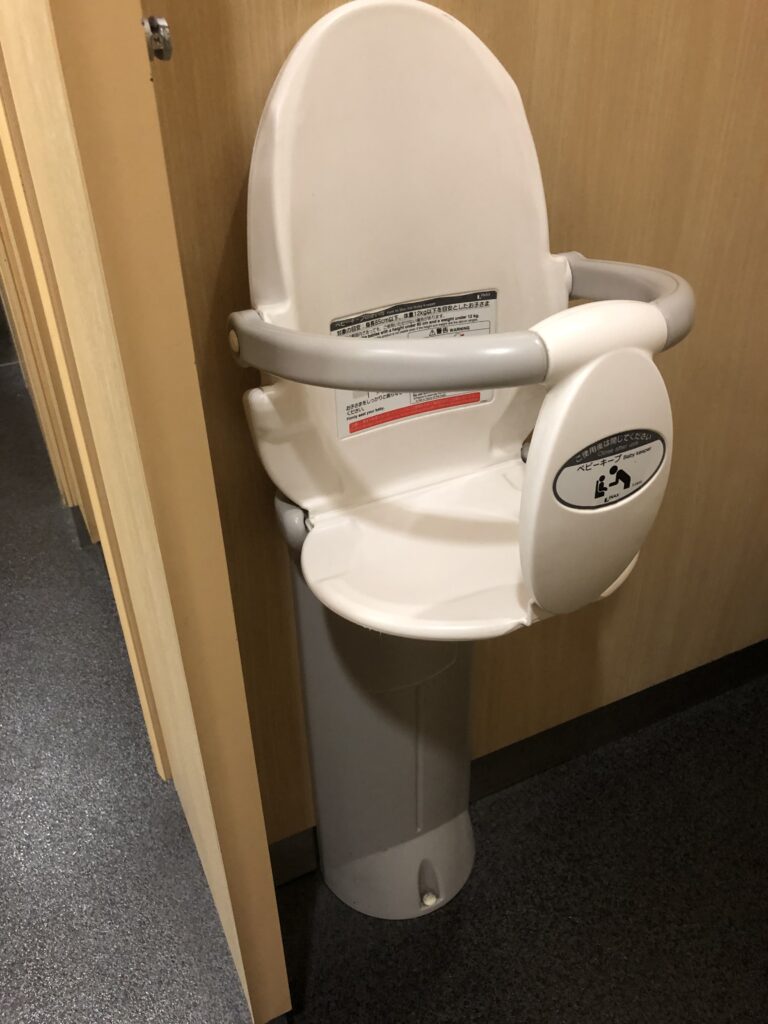
Family toilet rooms will have changing facilities for babies, including a changing table and a special waste box for diaper disposal that essentially pulls them into a vacuum until the staff empties the garbage. Typically, if you have those facilities, there is usually a toddler’s seat where you can plunk down children up to age 4 (depending on size) so they do not wander about when you change their siblings.
Kanji for toilets
Toilets are marked with the near-universal signs of a red female and a blue male, designating the type of toilet. Occasionally, you can see creative versions of this, and sometimes the kanji are used (男 for men, 女 for women).
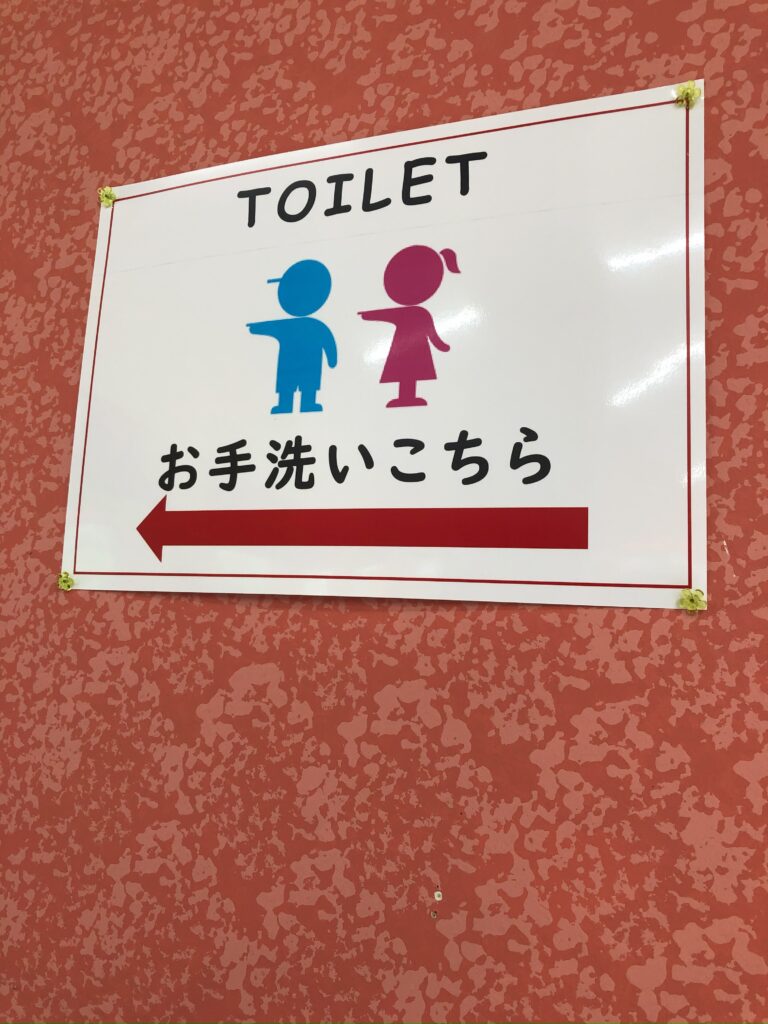
For the seeing impaired, there is often (especially in the subway and train stations) a speaker broadcasting words like ”kochira yoshi toire desu”. ”Kochira (こちら)” means ”here”, ”toire (トイレ)” means toilet, and ”yoshi (じょし)” should be ”yosei” 女子, which means female. The toilets with a blue male are advertised as ”danshi (だんし, 男子)”. There are no special speakers at the toilets aimed at those with disabilities or families.
Several words for Toilet
Japanese has several words for toilet. Toire (トイレ) can mean the actual appliance, and so is more direct — and less polite. When asking where the toilet is in a restaurant or store, you usually say ”o tearai wa doko desu ka”, where ”tearai (手洗い, てあらい)” means ”place to wash hands”. The least polite is ”benjo” which means ”pooping room”.
English also has several ways to refer to the toilet (loo, toilet, bathroom, powder room), but the meaning is the same, just as in Japanese. Typically, signs pointing to the toilets will say ”トイレ”. Often, there is text in English as well, more and more frequently, especially at tourist destinations where the staff has got tired of answering questions.
Clean and maintained toilets
The shared toilets in the restaurant buildings and shopping centers are maintained by the building owners. They are cleaned and maintained frequently — you may notice the cleaning protocols, a schedule sheet with names of the cleaners, and the time they performed the cleaning. That means there is always toilet paper and they are always clean.
The same goes for another kind of public toilet, the ones in the stations. There are public toilets in both the subway and train stations, both on the private railways and the JR stations, although they are often inside the ticket gates and impossible to access unless you have a ticket.
Unisex public toilets
Usually, public toilets in Japan are private affairs, often unisex (in particular the disabled-accessible toilets, and the ”family toilets” which are intended for parents with children). The person, or family, enters and locks the door.
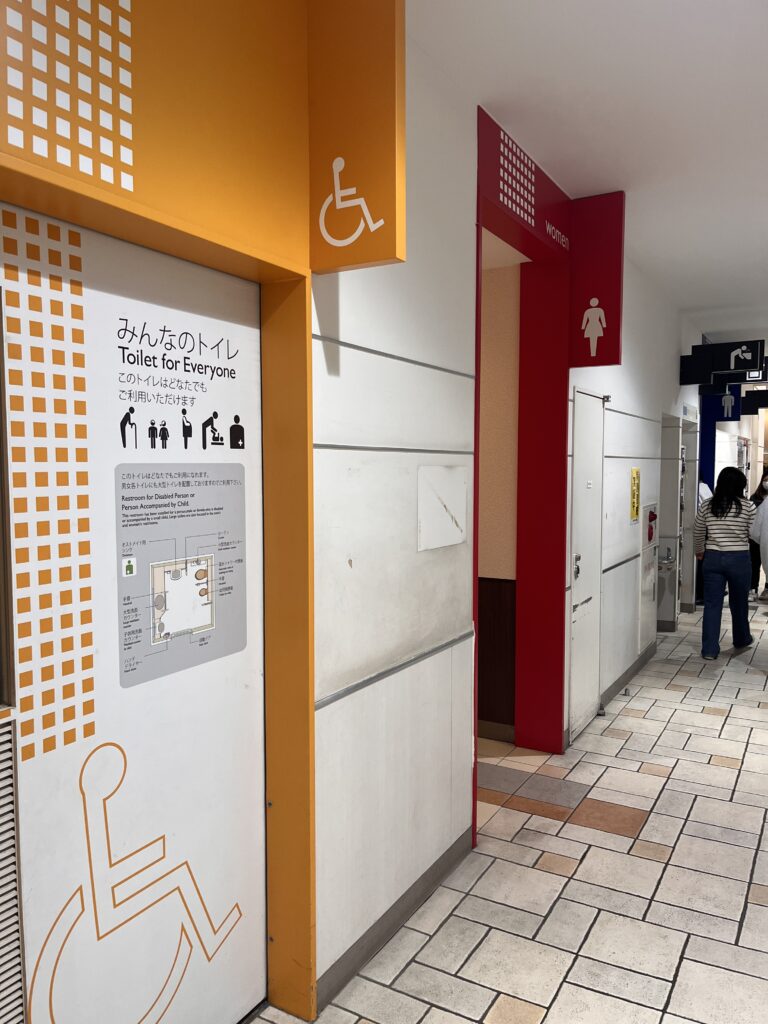
Usually, there is an emergency button intended to call a security guard or other staff; this works in the stations where a station attendant will appear almost instantly, but less often in department stores and shopping centers where a shop attendant is expected to answer the call, but may not even notice it. Regardless, be careful with the alarm. You may trigger it by mistake, especially the type that is triggered by pulling a string, which is often mounted just above the flush button.
Public toilet bidet flush
More often, the more modern they are, Japanese public toilets come with the Washlet appliance. This is a device in the shape of a toilet seat, which is connected to the toilet’s water supply and to electricity. It has bidet functions, and can warm up the toilet seat on cold days. Apart from this, it will also start giving off the sound of flushing water when you enter (but not actually flush until you push the flush button (or lever, if it is still affixed to the appliance itself)).
Confusing controls
The washlet can be confusing to those not used to it; the big swirl (often blue) is the flushing function, the small for wee flushes, and the other buttons control the bidet function, including the dryer. Mistaking the buttons occasionally results in a rude awakening when a stream of cold water hits unprepared body parts, so be sure you know what will happen when you press which button.
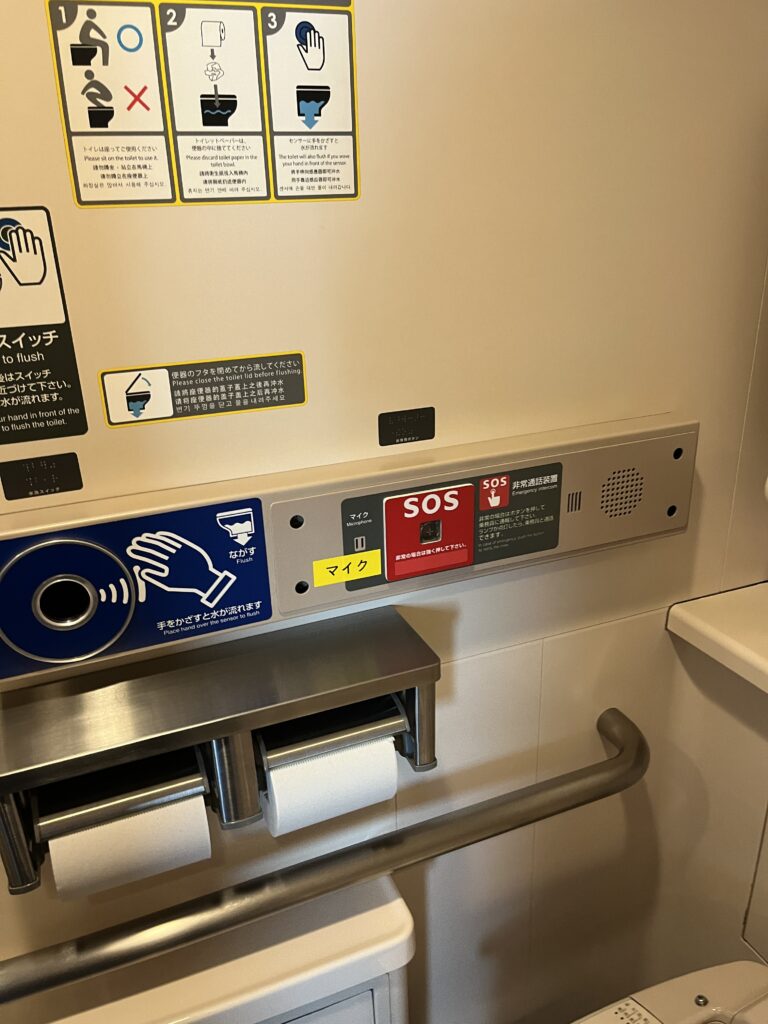
The sound fills several functions: It signals discreetly that someone is in there (in addition to the lock on the door), and it masks any rude bodily sounds. You used to find the function only in women’s toilets, but now it is everywhere.
Automatic soap convenience
The automated conveniences do not end with the actual toilets, however. The wash basins automatically start the flow of water when you pass your hand under the faucet.
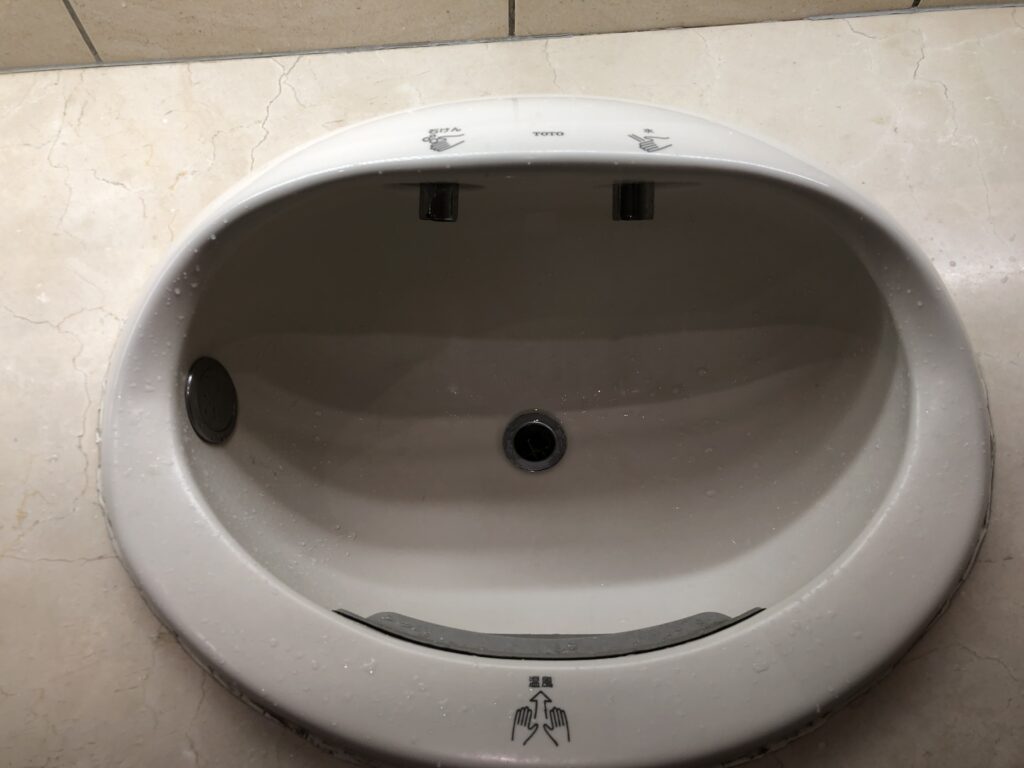
In some places, you will even find an integrated washbasin with water, soap, and hot air flowing automatically out of different faucets when you move your hands under them. Be careful not to move your hands too much, otherwise you will trigger the flow of soap again and again.
Stay tuned for more exciting content like this! Follow us on our social media platforms and check out our blog regularly to stay updated on the latest news, trends, and insider stories from Japan. Don’t miss out on future updates—sign up for our newsletter for exclusive content delivered straight to your inbox!
Related Articles
Warning: Undefined array key "sfsi_threadsIcon_order" in /home/veremosglobal/tokyoroomfinder.com/public_html/blog/wp-content/plugins/ultimate-social-media-icons/libs/controllers/sfsi_frontpopUp.php on line 165
Warning: Undefined array key "sfsi_blueskyIcon_order" in /home/veremosglobal/tokyoroomfinder.com/public_html/blog/wp-content/plugins/ultimate-social-media-icons/libs/controllers/sfsi_frontpopUp.php on line 170
Warning: Undefined array key "sfsi_bluesky_display" in /home/veremosglobal/tokyoroomfinder.com/public_html/blog/wp-content/plugins/ultimate-social-media-icons/libs/controllers/sfsi_frontpopUp.php on line 266



